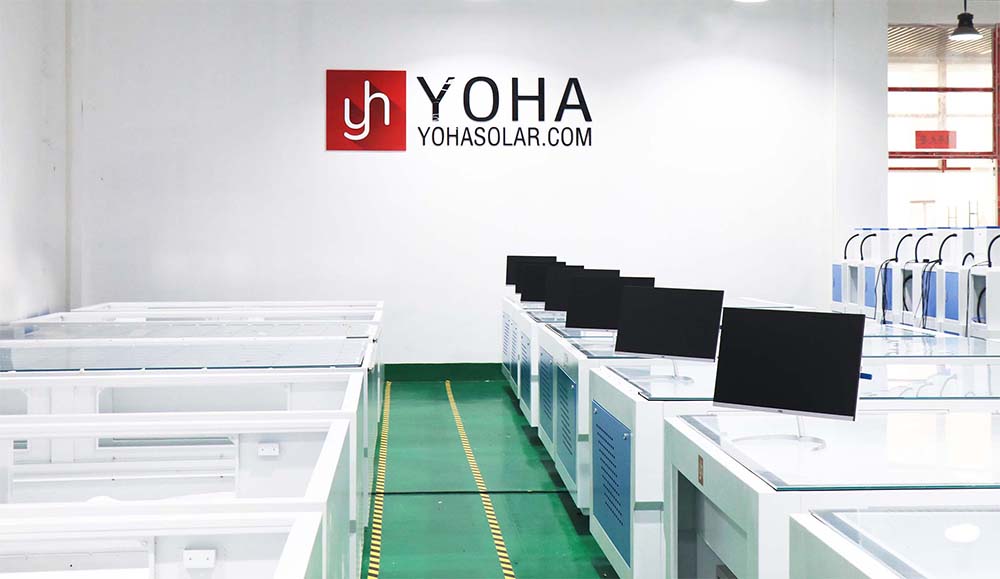Welcome to Wuhan Yoha Solar Technology Co., Ltd!
common problem
Site Map
Language:
 Chinese
Chinese
 English
English
Welcome to Wuhan Yoha Solar Technology Co., Ltd!
common problem
Site Map
Language:
 Chinese
Chinese
 English
English
EL Testing Equipment: The Visionary Tool for Solar Panel Health Assessment in the Pursuit of Higher Efficiency and Long-Term Reliability
In the solar industry's pursuit of higher efficiency and extended reliability, solar panel electroluminescence (EL) testing equipment has become indispensable. Functioning like a precision "X-ray vision" diagnostician, it identifies latent defects invisible to the naked eye—both pre-deployment and during operation—safeguarding PV system quality and long-term performance. But how does this critical technology work? Let's explore its operating principles.
Solar panel EL testers leverage the electroluminescence (EL) effect in semiconductor materials. Silicon wafers—the heart of solar cells—are intrinsically semiconductors. When forward-biased (external power supply positive to P-type region, negative to N-type region), they exhibit a reverse process to photovoltaic generation:
Carrier Injection: External current drives holes from the P-region and electrons from the N-region across the PN junction.
Non-Equilibrium Carrier Recombination: Injected carriers (beyond thermal equilibrium) recombine during diffusion.
Photon Emission: Recombining electron-hole pairs release energy (≈ silicon bandgap) as photons, emitting near-infrared (NIR) light (1100-1200 nm wavelength).
Key Insight: Luminescence intensity correlates directly with local current density and recombination efficiency. Defect-free regions emit uniform, bright light. Defects (cracks, broken fingers, chips, low-efficiency zones, sintering defects, contamination, PID, etc.) alter current flow or recombination, creating distinct dark patterns.

The system converts faint NIR emissions into visual defect maps through this workflow:
Controlled Current Excitation:
Secure electrical connection to panel terminals via specialized fixtures/probes.
Application of low forward DC current (typically 5%-20% of Imp) sufficient for EL signal generation without damaging cells or inducing hot spots.
Dark Environment:
Sealed dark chambers/boxes eliminate ambient light interference, as EL emissions are orders of magnitude weaker than daylight.
High-Sensitivity IR Imaging:
Core "Eye": Cryogenically cooled NIR camera (InGaAs or Si-based CCD/CMOS sensor with thermo-electric cooler (TEC)).
High quantum efficiency at 1100-1200 nm.
Deep cooling (down to -60°C) suppresses sensor noise, enabling high signal-to-noise ratio (SNR) and contrast.
Image Processing:
Captured EL distribution maps undergo software optimization (noise reduction, enhancement, contrast adjustment) to clarify defects.
Defect Visualization & Interpretation:
Bright Uniform Areas: Healthy cell regions with normal current flow.
Dark Patterns (Critical Defect Indicators):
Cracks/Micro-cracks: Sharp black lines/networks (blocked current).
Broken Fingers/Poor Soldering: Black interruptions in busbars/fingers (impaired current collection).
Chips/Fragments: Irregular dark areas with sharp edges.
Low-Efficiency Zones/Sintering Defects/Contamination: Diffuse dark spots/overall dim cells (excessive recombination).
PID (Potential Induced Degradation): Edge-cell darkening.
Black Core/Spots: Central cell darkening (diffusion/sintering issues).
Manufacturing Quality Control:
Screening at critical stages (cell sorting, post-stringing, pre-lamination, final inspection) to reject defective units, reducing quality risks and warranty costs.
Enhanced Module Reliability:
Identifies latent structural defects (e.g., micro-cracks) that may propagate under mechanical/thermal stress during transport, installation, or operation—preventing failures and hot-spot fires.
Plant Commissioning & O&M:
Acceptance Testing: EL sampling/full inspection during plant handover or component delivery to verify contract compliance.
Operational Diagnostics: Periodic EL testing (using portable/mobile systems) pinpoints underperforming modules, enabling targeted maintenance.
Process Optimization & R&D:
Defect pattern analysis provides direct feedback for improving cell production and module assembly processes.
Solar panel EL testing equipment, with its non-contact, non-destructive, high-sensitivity imaging based on electroluminescence, provides the industry with an indispensable "visionary tool" for assessing internal module quality. From production lines to power plants, it fundamentally elevates manufacturing standards, long-term performance, and system safety.
As PV technology advances toward higher efficiencies, larger formats, and thinner wafers, demands for higher detection accuracy, speed, and automation drive continuous innovation in EL testing. This technology remains foundational to the solar industry's quest for quality improvement, efficiency enhancement, and sustainable growth. Understanding its principles is essential for mastering modern PV quality assurance systems.
Behind every reliable solar panel lies the unseen power of EL inspection—turning invisible weaknesses into actionable insights, one photon at a time.
keywords:TOP
18086473422
MESSAGE
